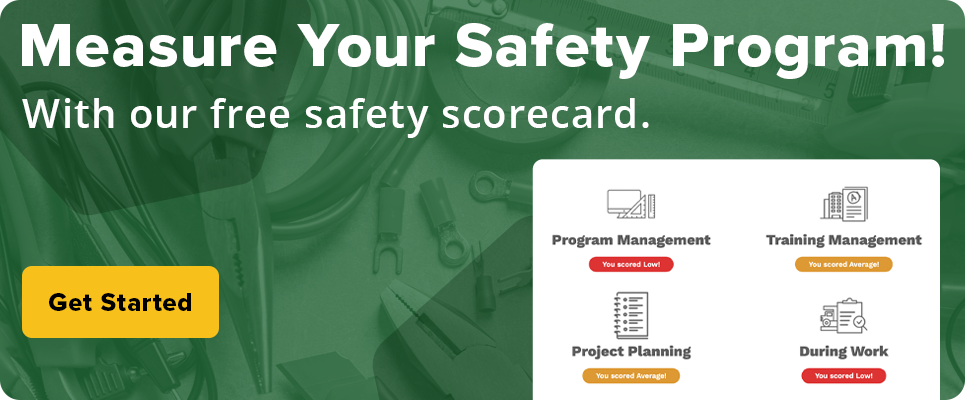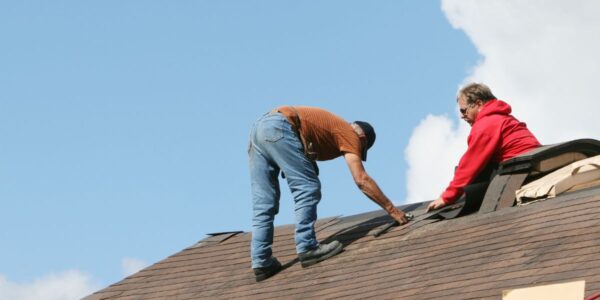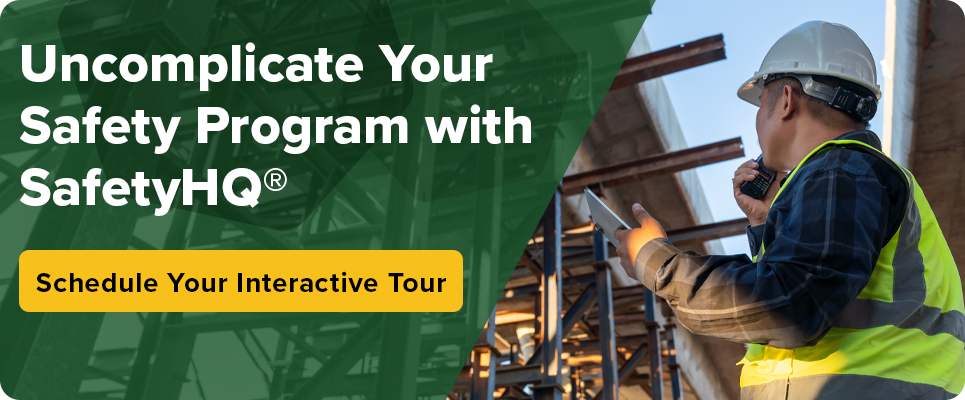
On December 16, 2021, Double M Roofing & Construction had a crew of four employees replacing a roof on a townhouse in Berea, Ohio, when one of them fell 20 feet to the ground. The employee who fell was a 14-year-old boy, and he suffered critical injuries.
The owner of the company, Melvin Schmucker, who was on site, and the two other employees proceeded to retrieve and put on personal fall protection equipment that was in their trailer at the job site.
It is assumed that this act was an attempt to hide the company’s safety failures, as there was no required report of the injury made to OSHA.

A nearby security camera captured the evidence OSHA needed of the boy and the other employees working without fall protection equipment. This evidence was submitted to local police, who passed it along to OSHA.
Approximately two weeks later, OSHA inspectors caught up with the roofing company on a different job site where workers were once again working at heights of more than 22 feet without the necessary fall protection equipment.
OSHA has just recently issued citations to the company for two willful, three serious, and one other-than-serious violations of OSHA’s safety standards, totaling more than $70k.

What Fines Did OSHA Issue?
There were a total of 6 citations issued between the two job sites. We outline them in layman’s terms below and also link to the referenced OSHA regulation, which was broken.
Citation 1 & 2
Regulation 29 CFR 1926.21(b)(2) was broken when the company failed to instruct their employees on how to recognize and avoid unsafe conditions on their work site, in this case, a fall from heights.
OSHA designated the citation as “Serious” and assigned a fine of $4,096.00.
The second citation for this same regulation occurred on a jobsite two weeks later. OSHA assigned a fine of $30,037 to the second citation.
The difference between the two citations was that OSHA designated the second as “Willful – Serious”
Citation 3 & 4
Regulation 29 CFR 1926.501(b)(13) was broken when the company failed to ensure it’s employees were properly protected from the fall from heights hazard by either guardrails, safety nets or personal fall arrest systems.
OSHA designated the citation as “Serious” and assigned a fine of $4,096.00.
The second citation for this same regulation occurred on a jobsite two weeks later. OSHA assigned a fine of $30,037 to the second citation.
The difference between the two citations was that OSHA designated the second as “Willful – Serious”
Citation 5
Regulation 29 CFR 1904.39(a)(2) was broken when the company failed to report the in-patient hospitalization resulting from a workplace incident to OSHA within the required 24 hours, or in this case, at all.
OSHA designated the citation as “Other-Than-Serious” and assigned a fine of $2,926.
Citation 6
Regulation 29 CFR 1926.102(a)(1) was broken when the employees were not wearing safety glasses when using air-powered nail guns.
OSHA designated the citation as “Serious” and assigned a fine of $2,341.
The Fallout
The fact that the injured employee was only 14 years old was not referenced in the citation. The Fair Labor Standards Act sets 14 as the minimum age of employment and limits the number of hours worked for those under 16. It also prohibits their employment in work declared as hazardous but leaves the term open to interpretation.
When asked to comment, the OSHA Cleveland area director Howard Eberts said the Department of Labor’s child labor laws do not permit “a 14-year-old to work construction work at heights; the boy should not have been allowed to work on the roof.”
The company has fifteen days from the date of issuance to either pay the fines and provide corrective actions for each citation or formally notify the board of their intent to contest.
What Can We Learn From These Mistakes?
There is a ton we can learn from the many, many mistakes clearly made by Double M Roofing, but the three we should focus on are:
-
- Public Fall Out
The names of companies receiving OSHA citations are made publicly available. This means your community, insurance company, employees, competitors, and potential future clients have full access to all the information.
In addition to the fines handed out by OSHA, there is a huge potential for additional financial loss through insurance rate increases, drops in revenue, employee turnover, and damage to your reputation.
-
- What ‘Willful” Means
In this case, the difference between a “Serious” and a “Willful – Serious” citation was $25k. As outlined in Section 17 of the act, OSHA increases the amount of the fine if the citation is repeated or they determine it was knowingly committed.
The max fine for a serious citation is $13,653 while a willful or repeated citation max is $136,532.
Obviously, the goal is to not break regulations to begin with, but if you do and are caught, there are no second chances.
-
- Instruct vs Ensure
OSHA makes a distinction between instructing your employees in regards to hazards and ensuring they are following your instructions; So much so, that you can be cited and fined in both ways for the same infraction.
“All too often, OSHA inspectors responding to reports of roofers without fall protection find the employer has the safety equipment on-site and refuses to ensure its use,” explains Eberts. “Exposure to fall hazards makes roofing work among the most dangerous jobs in construction. OSHA requires fall protection when working at heights greater than 6 feet.”
In short, they require you to properly train workers and follow up to make sure they are using their training.
How SafetyHQ Can Help Avoid These Citations
We don’t know what kind of Safety Program Double M Roofing has if they have one at all. If they do have documentation of Fall Protection training they provided their workers, they would be able to formally contest citations 1 and 2 and use their training documents as evidence.
Furthermore, if they possessed records of site inspections where a supervisor notes the workers wearing proper personal fall protection, they could attempt to contest citations 3 and 4.
If they could even come up with paperwork documenting disciplinary actions taken against their own employees for failing to adhere to company fall protection regulations, it would give them a stronger argument that they are doing their due diligence.

This is where a Safety Management System such as SafetyHQ can benefit companies: by creating, storing, and making readily available the necessary documentation to challenge citations and even by preventing these infractions from happening to begin with.
We work with companies who require our help to start their safety programs, those with well established programs already in place, and all levels of companies in between.
To find out more about what you can do to improve your safety program, click on the article below that best describes your current program, or lack thereof.
5 Easy Tasks to Start Your Construction Safety Program
5 Simple Tasks to Improve Your Existing Construction Safety Program
5 Key Tasks to Make Your Construction Safety Program Amazing
Share Article
Keep on current news in the construction industry. Subscribe to free eNews!



